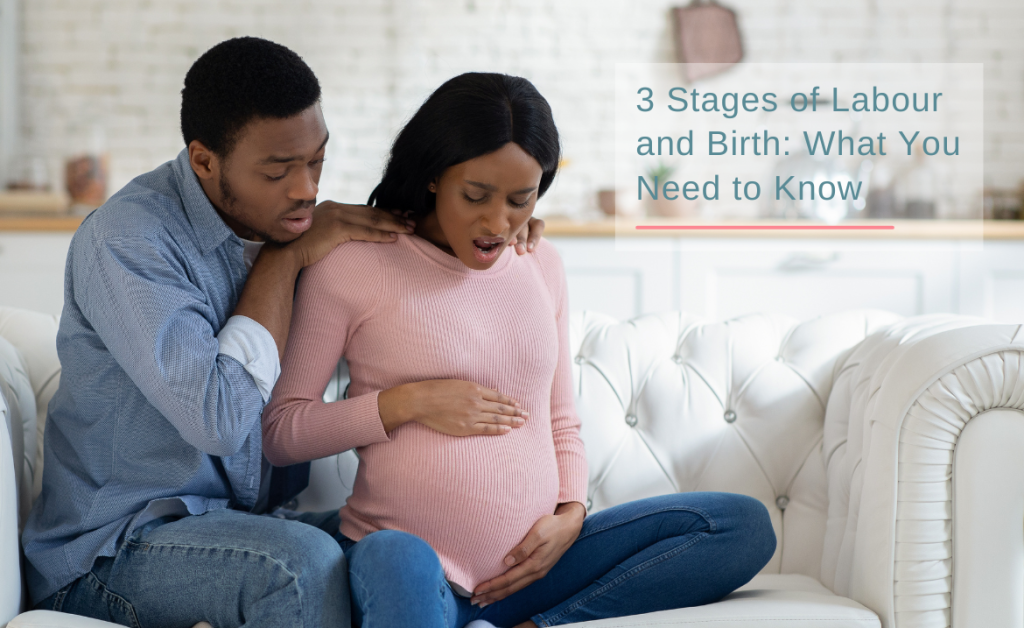So, it’s almost time! The moment you’ve been waiting for – to finally hold your precious baby in your arms.
As you fast approach the due date, you’ll feel multiple emotions and wonder what to expect during labour and childbirth. Every woman’s experience is unique. But the signs and what you experience through each stage of labour are quite the same.
Let’s walk through these together.
The three stages of labour
Stage 1: early labour, active labour and transition
We can break Stage 1 down into three phases.
- Early labour: During this phase, your cervix dilates by zero to three centimetres, and contractions begin. At this point, you may feel regular or irregular contractions and some of the following symptoms.
- Lower back pain.
- Period-like cramps that come and go.
- Loose bowels.
- The urge to vomit.
- Blood-stained mucus discharge.
The early labour phase can last a few weeks, days or hours. It can be longer for first-time mums and shorter for subsequent pregnancies.
While early labour is generally not painful, you may feel the contractions may cause discomfort. In this case, we recommend you go for walks, take a nice warm bath or shower and practice relaxation methods such as deep breathing.
- Active labour: During the active phase is when you will really start to feel the pain as stronger and more intense contractions begin. The contractions will last between 30 to 60 seconds and occur every three to four minutes. Active labour can last for up to eight hours or more.
- Transition phase: Get ready as your baby will soon arrive! At this point, your cervix is fully dilated. Your contractions become more frequent and painfully intense. You will feel the urge to go to the toilet as the baby’s head moves down the birth canal and pushes against the rectum.
Stage 2: pushing and birth.
You will now begin to feel a strong urge to push along with a burning and stretching sensation as the baby moves further down the vagina, ready to be delivered. During this time, Dr Kothari and a midwife will guide you through this stage to ensure you have a comfortable, unhurried delivery.
Stage 3: Birth and delivery of the placenta.
Your baby is born, and as they take their first breath into this world, Dr Kothari will place the baby into your arms so you can cherish this beautiful moment.
Shortly after this, it’s time to deliver the placenta. That’s right – you’re not done yet. Approximately within the next 30 minutes of the birth of your baby, you will feel mild contractions which help the placenta move down the birth canal. Dr Kothari will ask you to push gently once more to deliver the placenta.
Once the placenta is delivered, your uterus will continue to contract to control blood loss and help it return to its actual size.
Cesarean (C-section) delivery
Remember, sometimes deliveries don’t go as planned. So, whilst you may wish to have a natural delivery, you must also be prepared for an emergency c-section. Cases that require an emergency C-section include:
- When the labour is not progressing.
- The baby’s heartbeat is irregular.
- There is a problem with the placenta.
- The baby is too large for a vaginal delivery.
When to seek medical advice
There are times when during late pregnancy, unexpected changes can occur. Some may leave you feeling anxious, especially if you are a first-time mother.
If you are experiencing any pregnancy-related symptoms that you are concerned about, it is important to seek medical attention as soon as possible. Dr Kothari will carefully consider any symptoms you experience and take the time to help you feel relaxed and confident.

